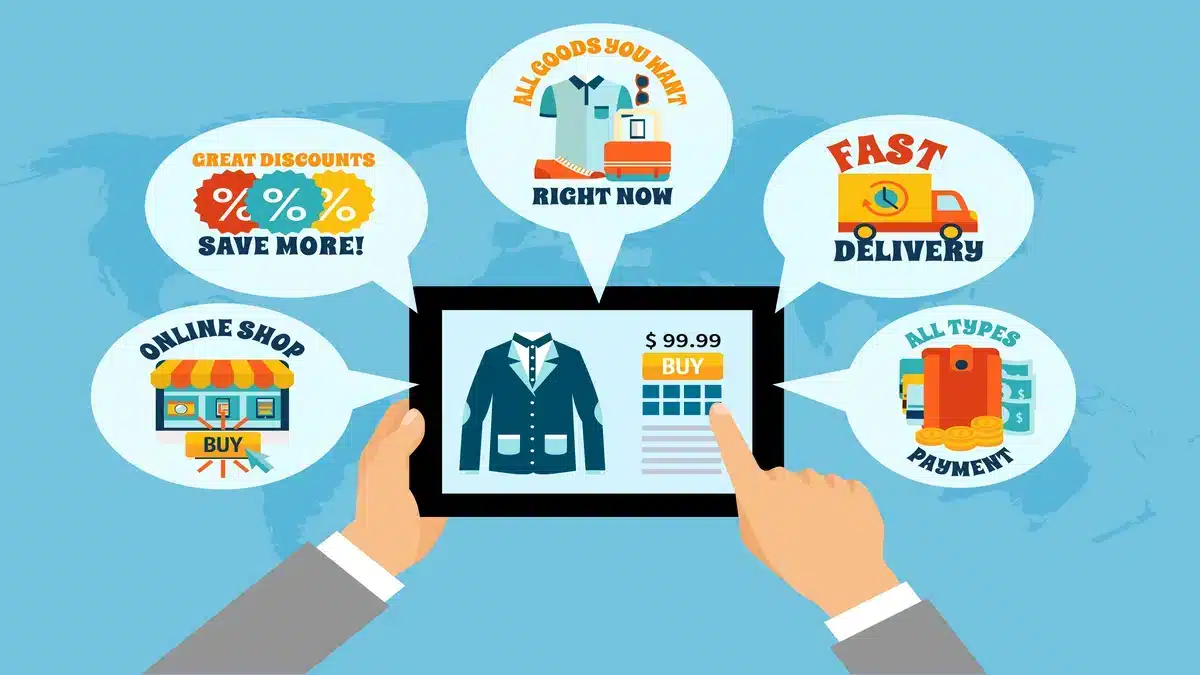- Understanding Sustainable Ecommerce
- Key Benefits of Sustainable Ecommerce
- Challenges in Implementing Sustainable Ecommerce
- Data-Driven Insights: How to Measure Value in Sustainable Ecommerce
- Case Studies: Successful Sustainable Ecommerce Brands
- The Role of Technology in Driving Sustainable Ecommerce
- The Future of Sustainable Ecommerce
- Conclusion
- FAQS
Sustainable Ecommerce: A Path to a Greener Future

- Understanding Sustainable Ecommerce
- Key Benefits of Sustainable Ecommerce
- Challenges in Implementing Sustainable Ecommerce
- Data-Driven Insights: How to Measure Value in Sustainable Ecommerce
- Case Studies: Successful Sustainable Ecommerce Brands
- The Role of Technology in Driving Sustainable Ecommerce
- The Future of Sustainable Ecommerce
- Conclusion
- FAQS
Sustainable eCommerce means more than a trend or change in how companies do business digitally. It is a sea change in how businesses operate. With consumers becoming increasingly sensitive to their ecological impact, all types of businesses must evolve.
This paper considers the importance of sustainable eCommerce, what it can yield for business, and steps companies can take to overcome the barriers that have prevented them from going green.
Understanding Sustainable Ecommerce

Sustainable eCommerce is business conducted in a way that does not harm the environment and is ethically responsible.
It reduces carbon dioxide emissions, limits waste, promotes eco-friendly packaging and ensures ethical sourcing in the supply chain.
1. The Environmental Impact of Ecommerce
The growth in eCommerce has also resulted in inadequate environmental effects. The contribution from the world of eCommerce is predicted to be just about 3.5% of all greenhouse gases globally.
The conclusion had been recently made public that in the full amount of carbon that is not being released from a purchase made from an online store, emissions related to logistics, packaging, and energy consumption of data centers turn out to be in the lead.
2. Why Sustainability Matters in Ecommerce
Ecommerce sustainability isn’t only about saving the environment; it’s also about catering to consumer demands and becoming more eco-conscious by the day.
Key Benefits of Sustainable Ecommerce

Sustainable eCommerce offers many benefits, both for the businesses and the environment. Here are some of the key advantages:
1. Reduced Environmental Impact
It would greatly reduce eCommerce companies’ environmental impact. For example, powering data centers with renewable energy sources reduces companies’ carbon emissions by as much as 80%.
2. Cost Savings
Sustainable practices generally save costs in the long run. For instance, energy-efficient technology investments, such as AI for demand predictions and blockchain for end-to-end visibility, can optimize operations and reduce waste with reduced costs.
3. Customer Loyalty
Consumers are becoming more brand loyal to companies practicing sustainability. According to an IBM (International Business Machines Corporation) study, 57% of consumers report readiness to change their buying habits to contribute to minimizing harmful environmental impact.
In comparison, 70% would be ready to pay a premium for sustainable and eco-friendly products.
Through commitment, eCommerce businesses can secure and hold these environment-sensitive customers.
4. Enhanced Brand Reputation
A truly sustainable commitment can elevate a brand’s reputation while fostering truthful trust. In light of environmental responsibility, the brand perception will attract media critique, be included in sustainability rankings, and establish a positive public image.
Challenges in Implementing Sustainable Ecommerce

Although the incentives of sustainable eCommerce have been spelled out clearly, the journey to green practices is not bereft of challenges. The commonest ones that businesses are likely to grapple with include:
1. Initial Costs
While some sustainability measures have an up-front cost, for example, changing over to sustainable packaging or using renewable energy systems, the prices can be prohibiting for many small businesses and startups.
2. Supply Chain Complexity
Implementing sustainability throughout the supply chain can be tricky and difficult, especially when related businesses have many suppliers and partners.
Bringing all suppliers to environmental and ethical standards entails rigorous vetting and subsequent monitoring, time-consuming, and joining other resource-intensive activities.
3. Consumer Perception
Though several consumers are now eco-conscious, very few are likely to pay a premium for green products.
Hence, it is necessary to sway customers into going for eco-friendly options, mostly when they are at a cost. The conveyed long-term value and environmental benefits have to be rich.
4. Balancing Sustainability and Growth
When it comes to businesses that are growing fast, sustainability is a term that has to be brought into accord with growth.
Scaling up the operations in a green way calls for quite careful planning and management. Green businesses should not deviate from their goals regarding sustainability as they grow.
5. Practical solutions to overcome challenges
The challenges can be mitigated by many solutions that a business can implement.
For example, integration with third-party logistics providers specializing in eco-friendly delivery may help decrease the environmental impact of shipping.
Data-Driven Insights: How to Measure Value in Sustainable Ecommerce
Adding specific data and statistics to drive a point further will drive home the need for sustainable practices in eCommerce. A deep dive into the numbers that underline the need for change follows.
1. Carbon Footprint of Online Shopping
Online shopping contributes to a significant carbon footprint primarily due to the logistics required to bring the goods that people buy to them. Indeed, according to research, the eCommerce sector contributes to about 3.5% of global greenhouse emissions.
For example, a study by MIT showed that, on average, a package delivery in the U.S. was responsible for approximately 0.12 kg of CO2 per mile.
2. Ecommerce Packaging Waste
The increase in online shopping has, of course, brought with it increased packaging waste. According to the Environmental Protection Agency, an estimated 30% of all the waste generated in the United States within a given year is packaging alone.
Case Studies: Successful Sustainable Ecommerce Brands
1. Patagonia

Patagonia is a brand related to outdoor apparel that has taken to making sustainability the core of its business. It uses recycled material for its products and provides options for repair and reuse. This brand also supports environmental causes.
This commitment to sustainability helped Patagonia build a customer base that is loyal to the company and established its leadership in eco-friendly practices.
2. Allbirds

Allbirds is one such brand of shoes that focuses on sustainability in its products, triggered by the use of natural materials and recycled artifacts.
The popular product lines under this category include wool, eucalyptus, and sugarcane shoes, and each piece within these types has been designed to have a minimal impact on the environment.
Allbirds follows by providing clear information about carbon emissions that go into each product and offsetting the emissions using carbon credits.
3. Toms

It is known formerly for the one-for-one giving model, but Toms has diversified its offerings with that of sustainability.
On its side of the equation, the brand has pledged to use sustainable products and packaging materials while setting aggressive targets to lower its carbon footprint.
Toms supports initiatives promoting environmental conversation and social responsibility.
The Role of Technology in Driving Sustainable Ecommerce
Technologies are very instrumental in enabling the performance of sustainable practices in eCommerce. A number of those technologies that underpin such transformation are listed below:
1. AI-Powered Sustainability Solutions
Sustainability levels within eCommerce are incrementally achieved with the help of AI.
It optimizes the supply chain based on predictions regarding demand, which, therefore, reduces waste during the process and enhances efficiency in terms of energy.
For instance, an inventory management system embedded with AI will alleviate understock and overstock situations, consequently decreasing production and storage-related environmental costs.
2. Blockchain for Transparent Supply Chains
It does this: makes the supply chains transparent and traceable. With a blockchain network, businesses hold an immutable record of all the transactions taking place, thereby verifying their suppliers’ sustainability to ensure environmental standards are met within the products.
This kind of transparency will build trust with consumers and avoid greenwashing.
3. Renewable Energy Integration
One of the biggest issues is integrating renewable energy into eCommerce operations to reduce carbon emissions.
Data centers, especially those supplying the digital infrastructure for eCommerce, are very electricity-intensive.
Companies like Google and Amazon are on the frontline, having made huge investments in renewable energy projects that power data centers.
The Future of Sustainable Ecommerce

Undoubtedly, green commerce is the future of eCommerce with growing consumer awareness. Some of the major eCommerce trends that one should watch out for in this are:
1. More Regulation
The governments of various countries will likely institute more rigid laws that concern environmental practices in eCommerce.
Therefore, a business must keep pace with changing times by using sustainable practices while observing the new laws.
2. More Circular Economy Focus
A circular economy, where products have inherent reuse, repair, and recycling value, will become more important in eCommerce.
Those brands that incorporate it into the circular business will ripple in the market and appeal to eco-sensitive consumers.
3. Increased Consumer Engagement
As technology evolves, companies will be much better positioned to involve consumers in their quest for sustainability.
From product recommendations that have a low environmental impact to developing interactive tools on product displays regarding the ecological impact of what is bought by customers, all the way to loyalty programs showing the best ways to be green, this potential space will open up for corporations.
4. Collaboration Across the Industry
The future of sustainable eCommerce will be based on increased collaboration between businesses, governments, and consumers.
Industry-wide efforts to reduce carbon footprints, share best practices, and develop new technology will be important in moving forward with sustainability.
Conclusion
Sustainable eCommerce is a moral obligation as much as a business opportunity. Green practices may help an eCommerce business reduce its impact on the environment and appeal to eco-sensitive consumers for a more resilient, more profitable future.
However, it has to be borne out of sustained commitment and investment in technology and innovation. As eCommerce transforms repeatedly, sustainability will remain key to defining its success.
FAQS
What is sustainable eCommerce?
Sustainable eCommerce refers to integrating environmentally friendly practices in online business operations. This includes reducing carbon emissions, using sustainable packaging, minimizing waste, and promoting ethical sourcing and production methods.
Why is sustainability important in eCommerce?
Sustainability is crucial in eCommerce because the industry significantly impacts the environment through packaging waste, carbon emissions from transportation, and energy consumption by data centers.
How can eCommerce businesses implement green practices?
eCommerce businesses can adopt various green practices, such as using biodegradable or recyclable packaging, optimizing logistics to reduce carbon emissions, switching to renewable energy for operations, and incorporating sustainable materials in their products.
What challenges do businesses face with sustainable eCommerce?
Challenges include higher costs, logistical complexities, and balancing profitability with sustainable practices.
Can you provide examples of sustainable eCommerce?
Brands like Patagonia and Amazon have implemented sustainable practices, including recycled materials, carbon reduction initiatives, and ethical sourcing.

Abhijit Sarkar
Hi, I’m Abhijit Sarkar. I am deeply passionate about creating engaging content and exploring. My journey includes gaining valuable experience in content writing and creating useful resources for my readers.

Leave a Reply